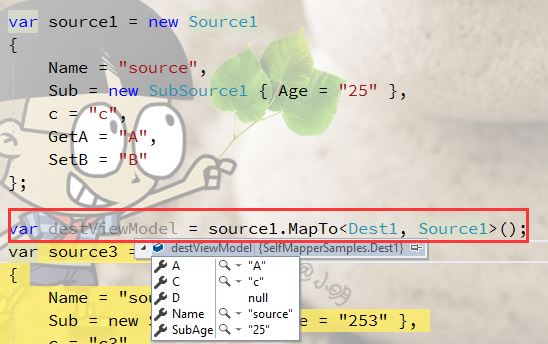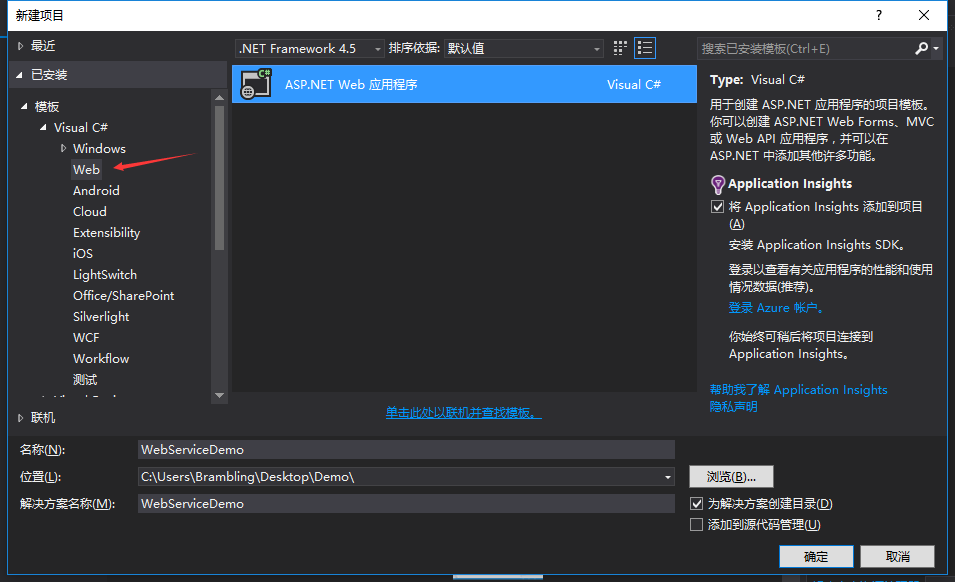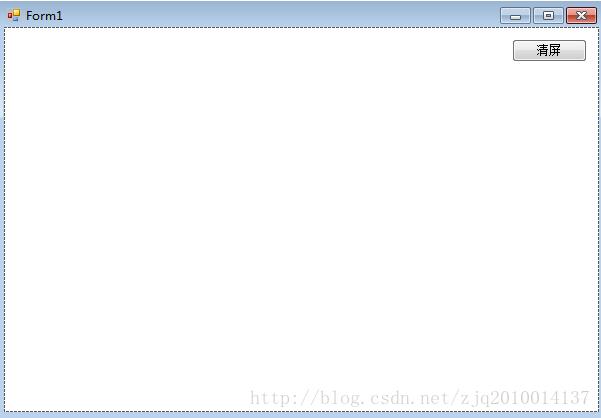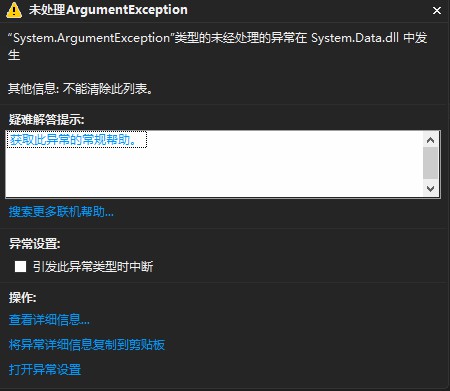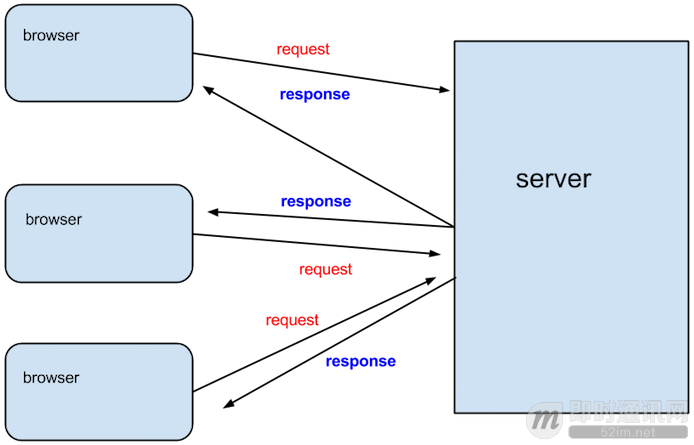A.net core 2.0新特性支持通过IEntityTypeConfiguration添加Code First配置到一个封装类。新建目标框架为.NET Core类库新建完了以后右键点击程序集,选择属性,选择目标框架为.NET Core 2.0 在EntityFrameworkCo...

A.net core 2.0新特性支持通过IEntityTypeConfiguration<>添加Code First配置到一个封装类。
新建目标框架为.NET Core类库
新建完了以后右键点击程序集,选择属性,选择目标框架为.NET Core 2.0
在EntityFrameworkCore程序集中添加类User(用户)、Address(用户住址)、Book(书)、Author(作者)。这里不讨论各个类设计的合理性和程序架构,主要目的是为了演示各个类之间的关系配置。
User和Address类用于演示配置1-0..1关系。User和Book用于演示1-N,即1对多关系。Book和Author用于演示N-N关系,即多对多关系。
注意:在EF6.x中,当配置1-0..1关系时,附属表的主键值可以与主表的主键相同,主表对应这里的User,附属表对应Address,而由于篇幅有限,在.net core 2.0中不讨论此实现,即每个表都有自己的主键,表关联都通过外键作为实现。
User表实现如下
using System;
namespace EntityFrameworkCore
{
/// <summary>
/// 用户模型
/// </summary>
public sealed class User
{
public User()
{
ID = Guid.NewGuid();
TimeCreated = DateTime.Now;
}
public Guid ID { get; private set; }
/// <summary>
/// 用户名称
/// </summary>
public string Name { get; set; }
/// <summary>
/// 用户登录密码
/// </summary>
public string Password { get; set; }
/// <summary>
/// 用户创建时间
/// </summary>
public DateTime TimeCreated { get; private set; }
public Address Address { get; set; }
}
}
Address表实现如下
using System;
namespace EntityFrameworkCore
{
/// <summary>
/// 用户地址模型
/// </summary>
public sealed class Address
{
public Address()
{
ID = Guid.NewGuid();
TimeCreated = DateTime.Now;
}
public Guid ID { get; private set; }
/// <summary>
/// 国家
/// </summary>
public string Country { get; set; }
/// <summary>
/// 省
/// </summary>
public string Province { get; set; }
/// <summary>
/// 城市
/// </summary>
public string City { get; set; }
/// <summary>
/// 区/县
/// </summary>
public string Area { get; set; }
/// <summary>
/// 街道
/// </summary>
public string Street { get; set; }
/// <summary>
/// 创建时间
/// </summary>
public DateTime TimeCreated { get; private set; }
/// <summary>
/// 用户ID
/// </summary>
public Guid UserID { get; set; }
public User User { get; set; }
}
}
Book实现如下
using System;
using System.Collections.Generic;
namespace EntityFrameworkCore
{
/// <summary>
/// 书模型
/// </summary>
public sealed class Book
{
public Book()
{
ID = Guid.NewGuid();
TimeCreated = DateTime.Now;
}
public Guid ID { get; private set; }
public DateTime TimeCreated { get; private set; }
/// <summary>
/// 书名
/// </summary>
public string Name { get; set; }
/// <summary>
/// 出版号
/// </summary>
public string PublicNo { get; set; }
public List<Author> Authors { get; set; }
}
}
Author实现如下
using System;
using System.Collections.Generic;
namespace EntityFrameworkCore
{
/// <summary>
/// 作者模型
/// </summary>
public sealed class Author
{
public Author()
{
ID = Guid.NewGuid();
TimeCreated = DateTime.Now;
}
public Guid ID { get; private set; }
public DateTime TimeCreated { get; private set; }
/// <summary>
/// 作者名字
/// </summary>
public string Name { get; set; }
public List<Book> Books { get; set; }
}
}
点击工具->NuGet包管理器->程序包管理控制台,在程序包管理控制台中输入命令:Install-Package Microsoft.EntityFrameworkCore.SqlServer
在EntityFrameworkCore中添加文件夹ModelConfigs
1-0..1关系配置User—Address:
using Microsoft.EntityFrameworkCore;
using Microsoft.EntityFrameworkCore.Metadata.Builders;
namespace EntityFrameworkCore.ModelConfigs
{
public sealed class UserConfig:IEntityTypeConfiguration<User>
{
public void Configure(EntityTypeBuilder<User> builder)
{
builder.HasKey(q => q.ID);
builder.Property(q => q.Name).HasMaxLength(100).IsRequired();
builder.Property(q => q.Password).HasMaxLength(100).IsRequired();
builder.Property(q => q.TimeCreated).IsRequired();
//使用HasOne和WithOne两个扩展方法对User表和Address表进行1-1关系配置
builder.HasOne(q => q.Address).WithOne(q => q.User).HasForeignKey<Address>(q => q.UserID);
}
}
}
using Microsoft.EntityFrameworkCore;
using Microsoft.EntityFrameworkCore.Metadata.Builders;
namespace EntityFrameworkCore.ModelConfigs
{
public sealed class AddressConfig: IEntityTypeConfiguration<Address>
{
public void Configure(EntityTypeBuilder<Address> builder)
{
builder.HasKey(q => q.ID);
builder.Property(q => q.Area).HasMaxLength(100).IsRequired();
builder.Property(q => q.City).HasMaxLength(100).IsRequired();
builder.Property(q => q.Country).HasMaxLength(100).IsRequired();
builder.Property(q => q.Province).HasMaxLength(100).IsRequired();
builder.Property(q => q.Street).HasMaxLength(200).IsRequired();
builder.Property(q => q.TimeCreated).IsRequired();
builder.Property(q => q.UserID).IsRequired();
}
}
}
UserConfig和AddressConfig分别对User表数据和Address表数据进行了配置,添加FluentApiDemoDbContext类并继承DbContext,微软官方解释DbContext实例是一个带有数据库的会话并且能用于添加和查询实体。FluentApiDemoDbContext类代码如下:
using System;
using System.Linq;
using System.Reflection;
using Microsoft.EntityFrameworkCore;
namespace EntityFrameworkCore
{
public class FluentApiDemoDbContext : DbContext
{
public FluentApiDemoDbContext(DbContextOptions<FluentApiDemoDbContext> options) : base(options)
{
}
public DbSet<User> User { get; set; }
public DbSet<Address> Address { get; set; }
protected override void OnModelCreating(ModelBuilder modelBuilder)
{
base.OnModelCreating(modelBuilder);
var typesToRegister = Assembly.GetExecutingAssembly().GetTypes()
.Where(q => q.GetInterface(typeof(IEntityTypeConfiguration<>).FullName) != null);
foreach (var type in typesToRegister)
{
dynamic configurationInstance = Activator.CreateInstance(type);
modelBuilder.ApplyConfiguration(configurationInstance);
}
}
}
}
如果这里直接把EntityFrameworkCore设为启动项,当在程序包管理控制台中输入:Update-Database时将报错:Unable to create an object of type 'FluentApiDemoDbContext'. Add an implementation of 'IDesignTimeDbContextFactory<FluentApiDemoDbContext>' to the project, or see https://go.microsoft.com/fwlink/?linkid=851728 for additional patterns supported at design time.提示需要添加一个IDesignTimeDbContextFactory<FluentApiDemoDbContext>的实现,这里如果是用Console写Demo,那么可以自行实现该接口,在该文中我将添加WebApi作为启用项。Startup.cs内容如下:
using Microsoft.AspNetCore.Builder;
using Microsoft.AspNetCore.Hosting;
using Microsoft.EntityFrameworkCore;
using Microsoft.Extensions.Configuration;
using Microsoft.Extensions.DependencyInjection;
using EntityFrameworkCore;
namespace WebApi
{
public class Startup
{
public Startup(IConfiguration configuration)
{
Configuration = configuration;
}
public IConfiguration Configuration { get; }
// This method gets called by the runtime. Use this method to add services to the container.
public void ConfigureServices(IServiceCollection services)
{
services.AddMvc();
var connection = @"Server=(localdb)\mssqllocaldb;Database=FluentApiDemoDb;Trusted_Connection=True;";
services.AddDbContextPool<FluentApiDemoDbContext>(options => options.UseSqlServer(connection));
}
// This method gets called by the runtime. Use this method to configure the HTTP request pipeline.
public void Configure(IApplicationBuilder app, IHostingEnvironment env)
{
if (env.IsDevelopment())
{
app.UseDeveloperExceptionPage();
}
app.UseMvc();
}
}
}
配置以后将该WebApi项目设置为启动项,在程序包管理控制台中输入:Add-Migration Initial以启动迁移。完成以后,项目会添加Migraions文件夹,
在程序包管理控制台中输入:Update-Database以完成数据迁移。完成后打开:视图->SQL Server对象资源管理器,可以查看比较具体的数据结构。
这里着重要看Address表中的UserID,UserID做为Address表的外键是非空的,按照文章开头说的1-0..1关系,这里只实现了1-1,并没有实现1-0关系,更改AddressConfig中的关系配置为:
… builder.HasOne(q => q.User).WithOne(q => q.Address).HasForeignKey<Address>(q => q.UserID).IsRequired(false);
并更改Address中的代码为:
…
public Guid? UserID { get; set; }
添加迁移并更新到数据库
1-N关系配置,1个用户拥有多本书。在User表中添加
…
public List<Book> Books { get; set; }
Book表中添加
…
public Guid? UserID { get; set; }
public User User { get; set; }
在ModelConfigs中添加BookConfig
using Microsoft.EntityFrameworkCore;
using Microsoft.EntityFrameworkCore.Metadata.Builders;
namespace EntityFrameworkCore.ModelConfigs
{
public sealed class BookConfig: IEntityTypeConfiguration<Book>
{
public void Configure(EntityTypeBuilder<Book> builder)
{
builder.HasKey(q => q.ID);
builder.Property(q => q.Name).HasMaxLength(100).IsRequired();
builder.Property(q => q.PublicNo).HasMaxLength(100).IsRequired();
builder.HasOne(q => q.User).WithMany(q => q.Books).HasForeignKey(q => q.UserID).IsRequired(false);
}
}
}
在FluentApiDemoDbContext中注册实体
…
public DbSet<Book> Book { get; set; }
在程序包管理控制台中添加迁移并更新到数据库:
N-N关系配置,当使用EF6.x时,配置多对多关系,EF会自动生成中间表,在.net core中,需要手动添加关系表,实际上在EF6.x中当配置多对多关系时,也可以通过中间表配置1对多的方式实现多对多。
这里通过Book表和Author表实现多对多关系配置。一个作者可以有多本书,一本书有多个作者。
首先添加关系表AuthorsInBooks
using System;
namespace EntityFrameworkCore
{
public sealed class AuthorsInBooks
{
public Guid BookID { get; set; }
public Book Book { get; set; }
public Guid AuthorID { get; set; }
public Author Author { get; set; }
}
}
同时更改Books表
public List<Author> Authors { get; set; }
改为
public List<AuthorsInBooks> AuthorsInBooks { get; set; }
同理更改Author表
public List<Book> Books { get; set; }
改为
public List<AuthorsInBooks> AuthorsInBooks { get; set; }
添加AuthorsConfig
using Microsoft.EntityFrameworkCore;
using Microsoft.EntityFrameworkCore.Metadata.Builders;
namespace EntityFrameworkCore.ModelConfigs
{
public sealed class AuthorConfig:IEntityTypeConfiguration<Author>
{
public void Configure(EntityTypeBuilder<Author> builder)
{
builder.HasKey(q => q.ID);
builder.Property(q => q.Name).HasMaxLength(100).IsRequired();
builder.Property(q => q.TimeCreated).IsRequired();
}
}
}
并在FluentApiDemoDbContext中注册Author
…
public DbSet<Author> Author { get; set; }
接下来添加AuthorsInBooksConfig
using Microsoft.EntityFrameworkCore;
using Microsoft.EntityFrameworkCore.Metadata.Builders;
namespace EntityFrameworkCore.ModelConfigs
{
public sealed class AuthorsInBooksConfig:IEntityTypeConfiguration<AuthorsInBooks>
{
public void Configure(EntityTypeBuilder<AuthorsInBooks> builder)
{
builder.HasKey(q => new
{
q.AuthorID,
q.BookID
});
builder.HasOne(q => q.Author).WithMany(q => q.AuthorsInBooks).HasForeignKey(q => q.AuthorID);
builder.HasOne(q => q.Book).WithMany(q => q.AuthorsInBooks).HasForeignKey(q => q.BookID);
}
}
}
在管理控制台中添加迁移并更新到数据库
本文标题为:.net core 2.0 Code First Fluent API配置


基础教程推荐
- C#执行EXE文件与输出消息的提取操作 2023-04-14
- C# TreeView从数据库绑定数据的示例 2023-04-09
- C#实现归并排序 2023-05-31
- Unity虚拟摇杆的实现方法 2023-02-16
- C#使用NPOI将excel导入到list的方法 2023-05-22
- C#使用Chart绘制曲线 2023-05-22
- 浅谈C# 构造方法(函数) 2023-03-03
- C#使用SQL DataAdapter数据适配代码实例 2023-01-06
- C#中参数的传递方式详解 2023-06-27
- 如何用C#创建用户自定义异常浅析 2023-04-21








